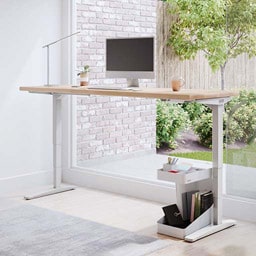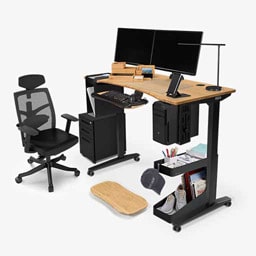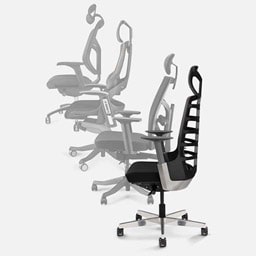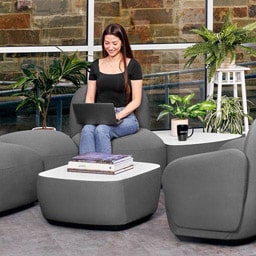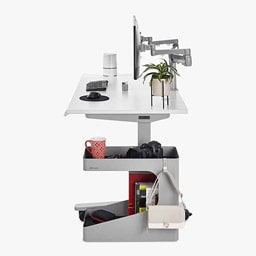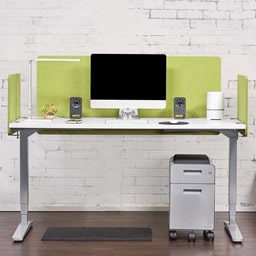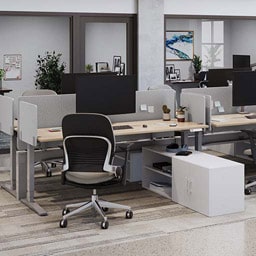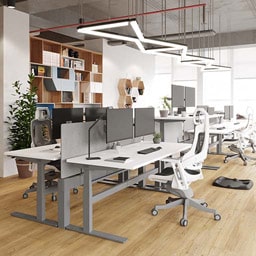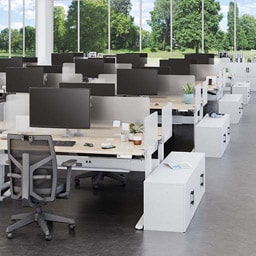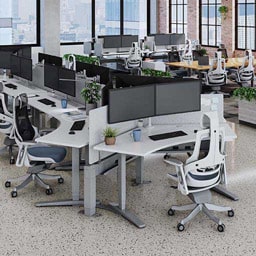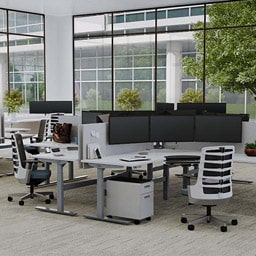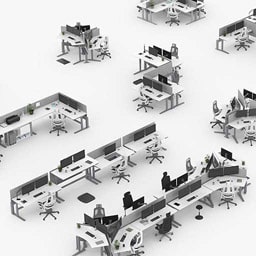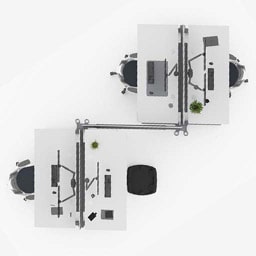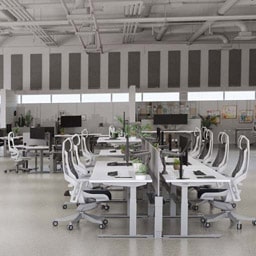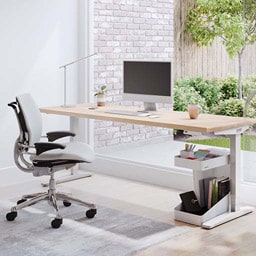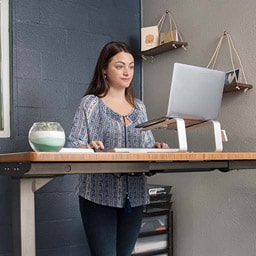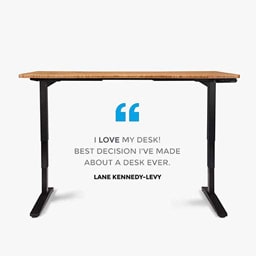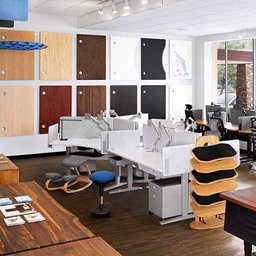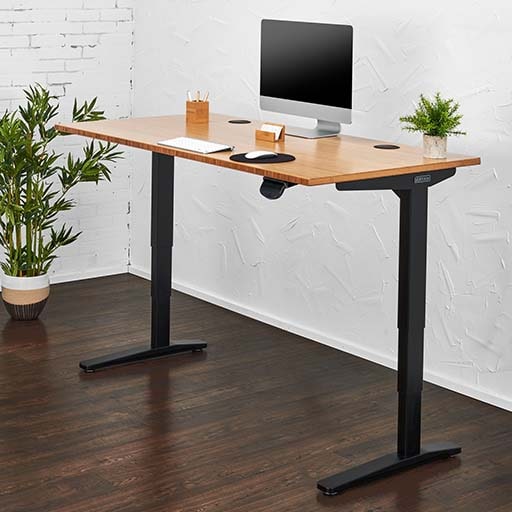Ergonomics for back pain relief at work | UPLIFT Desk
Posted by UPLIFT Desk on Apr 14th 2023

Ergonomics for back pain relief at work
Find freedom from lower back pain with these ergonomic strategies for a happier and healthier work life.
Lower back pain is a common issue among adults, with up to 80% of people experiencing it at some point in their lives. It can be caused by sitting with poor posture for long durations, lifting too much weight, or even stress, anxiety, and lack of sleep. Fortunately, there are several strategies you can implement to help reduce lower back pain while working at the office.
Solutions like ergonomically designed chairs, footrests, and standing desks can help relieve pressure on your spine and improve circulation throughout your body. Anything you can do to move through healthy postures more frequently during the day has been shown to help repair and prevent many back issues. Taking regular breaks to stretch and walk around (or use a treadmill desk) will provide relief from tension and discomfort associated with sitting for long periods of time. Finally, practicing mindful techniques like deep breathing exercises can also help relax back muscles that may be contributing to the discomfort you're experiencing.
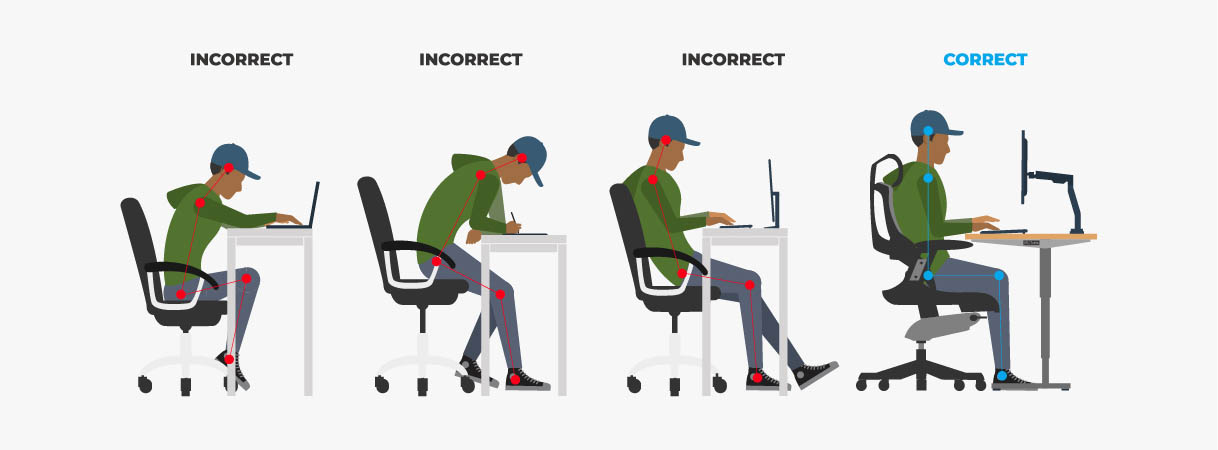
How ergonomics can help address lower back pain
When it comes to addressing lower back pain, ergonomics plays an important role. Assessing your work environment and making sure it provides adequate support can help prevent back issues from occurring. This may include getting an ergonomic chair that fits your body and offers an adjustable seat height, lumbar support, and other key ergonomic features. As well as adjusting desk height to allow sitting in a comfortable, ergonomic posture while completing a task. An often overlooked benefit of a standing desk is that it fixes seated height issues, too. Sitting at the ideal height for each task and having the ability to fine tune the seated height throughout the day to keep the wrists straight while mousing, typing, or doing other tasks is just as important as spending time standing at the desk.
Additionally, proper ergonomics also involves educating your team on correct posture while they are performing tasks such as sitting at their desks or lifting objects. For example, when lifting an object off of a shelf or desk, bending at the knees rather than the waist avoids putting unnecessary strain on the lower back. Team members should also take regular breaks throughout the day in order to give their bodies a break from repetitive motions associated with certain tasks that may contribute to lower back pain over time.
Benefits of height adjustable desks for lower back health
As people strive to increase productivity and comfort in the workplace, height adjustable desks are becoming increasingly popular as a way to promote lower back health. Studies have shown that standing at a desk periodically throughout the day can help alleviate aches and pains associated with long periods of sitting. Standing at a height adjustable desk can also help strengthen the muscles in the body's core, which in turn helps keep the spine in proper alignment. The ability to adjust desk height also allows for the user to find their most comfortable working position on any given day. Ergonomists like to say that the best posture is the next posture—keep moving! Standing desks help you move more.
A key benefit of standing desks is that they allow users to switch between sitting and standing positions throughout the workday while still being productive. This can help team members to remain more active and alert while also avoiding physical strain due to prolonged periods of sitting and static postures. This is especially beneficial for those who spend all day hunched over in an uncomfortable chair or slouching during extended periods of typing. Additionally, studies suggest that alternating between sitting and standing helps reduce fatigue and increases energy levels. In particular, standing at regular intervals has been linked to increased focus and creativity for workers engaged in mentally demanding tasks.
Using an adjustable height desk also reduces stress on the body since it allows you to adjust your workspace according to your size and shape. This is important because if you are not comfortable in your work environment, then there is a higher likelihood of experiencing tension and pain due to poor ergonomics. Being able to raise or lower your desk surface according to what's most comfortable for you personally helps ensure that you can maintain optimal posture throughout the day. Read more about the benefits of a standing desk.
Movement-based strategies for reducing lower back pain
Ergonomists stress the importance of movement and changing postures for good reason. Studies have shown that exercise can help to strengthen the core muscles that support the spine and reduce pressure on sensitive areas. It has also been found to be more effective than analgesic drugs for relieving chronic lower back pain, as well as an effective way to reduce debilitating pain and stay more active.
Studies conducted at the University of Alberta in Canada showed that strengthening exercises were highly effective in reducing lower back pain when combined with other interventions such as stretching and aerobic exercise. The study participants did a set of core strengthening exercises three times a week for eight weeks and reported significant improvements in their lower back pain symptoms.
Stretching is another important component for treating lower back pain. A review paper published in Physical Therapy concluded that incorporating stretching into daily activities can help with overall muscle flexibility and reduce risk factors associated with developing or exacerbating chronic lower back pain symptoms. Additionally, dynamic stretching which involves movement rather than static holds may be more beneficial because it encourages better coordination between muscles which helps improve posture, balance, and stability.
Finding comfort in an office environment
The office environment should be a place of comfort and productivity, both of which can be enhanced by proper ergonomics and movement. Ergonomic office furniture, such as adjustable chairs and standing desks, allow individuals to work in comfortable, neutral postures. Moreover, having access to accessories, such as footrests and standing mats, or cushioned ergonomic stools can help prevent discomfort from prolonged sitting or standing.
In addition to an ergonomic office setup, it is important for individuals to move more throughout the workday. Even just a few minutes of walking around the office helps reduce physical stress on the body and increases blood circulation. Or add lots of movement with a treadmill desk. By changing positions, adding movement throughout the day, and being aware of your posture, you can help make office work related lower back pain at work a thing of the past.
